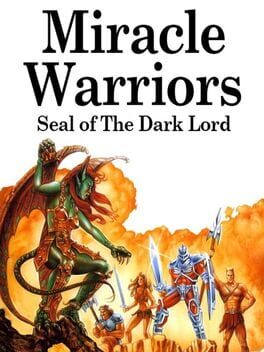

Miracle Warriors: Seal of the Dark Lord
Japanese RPG. Two editions exist, one for the MSX1 on cartridge, and one for the MSX2 on 3.5" diskette. The seal of the Dark Lord Terarin has been broken and Terarin has been unleashed into the world again. She has stolen the Golden Seal and opened pandora's box, unleashing evil creatures into the world. A young hero is tasked by a king to stop Terarin. He must step into footsteps of Iason, a shepherd that once accidentally unleashed Terarin and fought to seal the Dark Lord again. The hero must enlist the aid of three companions, Guy the warrior, Medi the amazon and Treo the pirate (called Turo in the manual) and find the three keys to Terarin's lair. To face the Dark Lord, they must find the mystical weapons and armor of old and then defeat Terarin and seal the Dark Lord from the world.
Reviews View More
It's still one of those early RPGs with minimal story and not an interesting lore to uncover though it's always funny to see early experimentations with the mechanics. Yes, only being able to carry three MAGIC healing items with you obtained from an specific enemy that lowers your points of this early morality system so that you can heal yourself in the middle of the battle even if you have herbs is a rough gameplay decision but it makes for realism (your wounds would not heal in time for a battle just from some medicine).
I also like the fact you don't actually need to win encounters to gain exeperience, instead with every hit an indvidual party member performs, he gains his own experience, and keeps it even if you flee. Because you face enemies one at a time like in Dragon Quest 1, once your selected characther attacks an enemy, whenever your foe attacks in an individual manner, it will always target the one that hit him, allowing you to pick who you want to be hurt so that the other companions aren't in risk of dying. It makes for a more tedious experience because of the high difficulty never allowing you to safely travel, but I can't deny that it has its charm. One of the most epic overworld themes of the 8 bit era as well:
https://youtu.be/_CFkutJMSpQ
